N600 History: The First Honda in America
The Honda N360 is a small front-engine, front-wheel drive, two-door, four-passenger car manufactured and marketed by Honda from March 1967 through 1970
- American Honda started selling automobiles in 1970 when it sold 4,159 Honda N600 sedans.
- 1970 Honda N600 Coupe used an air-cooled 600 cc 2-cylinder engine and retailed for just $1,395.
In 1969, after a decade of growth that led to Honda becoming the top-selling motorcycle manufacturer in America and the world, Honda embarked on a new mission to sell cars in the United States. Honda entered the U.S. market with the Honda N600, which was just 122 inches in length and could actually fit between the wheels of some full size vehicles in America, which measured up to 225 inches in length.
The N600 had an all-alloy engine that could achieve 9000 rpm and reach speeds of 81 miles per hour. A simple, yet skillfully designed vehicle, the N600 was nimble and fuel-efficient, characteristics it shares with today’s Honda’s, and helped paved the way for the quality and reliability for which Honda vehicles have become known.
The N600 was introduced to the United States as the 600 Sedan in 1969 as a 1970 model, and was the first Honda automobile to be officially exported to the United States by the Honda Motor Compan
1967 Honda N360
The Honda N360 is a small front-engine, front-wheel drive, two-door, four-passenger car manufactured from March 1967 through 1970 , as both a two-door sedan and three-door wagon in Japan’s highly regulated kei class, Kei car is the smallest category of Japanese vehicles. The larger-engined N600 was developed alongside the N360 in order to target export markets like the US and Europe,
Introducing N360
Japan’s automobile production volume reached 1.7 million in 1964, making it the fourth largest car producer behind the U.S., West Germany, and the U.K. It was a positive sign for the future, as by 1966, Japan was in third place at 2.28 million units and then second place in 1967 at 3.15 million. Facilitating such increases was the rapid growth of a consumer market, which had shown its preference for cars as a means of personal transportation.
“Around 1965, weekly magazines even ran features with titles like ‘This Week’s Recommended Driving Map,'” recalled Motoo Nakajima, who was in charge of car development at the R&D Center. “The market for family cars was expanding due to the extensive motorization of society.”
Domestic vehicle production began emphasizing passenger cars over trucks in 1965, a year in which the demand for private cars grew significantly. The industry sold cars such as the Nissan Sunny, Fuji Heavy Industries’ Subaru 1000, the Mitsubishi Colt 100, and Toyo Industries’ (now Mazda) Familia, endeavoring to satisfy the public’s demand. Accordingly, the competition among makers and models began to escalate, with particular emphasis on economy cars in the 1000 cc displacement category. In this so-called “3-C” era (cooler/air conditioner, color TV, and car), a car was counted by Japanese consumers of the day as one of their three “must-have” items.
Soichiro Honda offered the following as a description of his ideal car in the February 1958 issue of the Honda Company Newsletter (No. 28) regarding the “Executive Summary from the People’s Car Concept” – commonly known as the People’s Car Concept – that had recently been published by the Ministry of International Trade and Industry: “Even if such a car were compact, we of course can’t make people any more compact than they are. So, it’s difficult to just make a car truly compact. The smallest possible size, based on the issue of comfort, is about that of a Datsun.”
The March 1959 Newsletter (No. 41) offered another statement from Soichiro Honda concerning the state of car design in Japan: “The many mini cars that have been produced so far in Japan are by no means appropriate for domestic roads. I say this because these cars lack sufficient horsepower. Horsepower controls the driver’s emotions. When there’s a lack of power, the driver can’t accelerate or go fast, and this robs him of the ability to pass. And that becomes the cause of accidents.”
Mr. Honda thus stressed the value of horsepower and sufficient interior space.
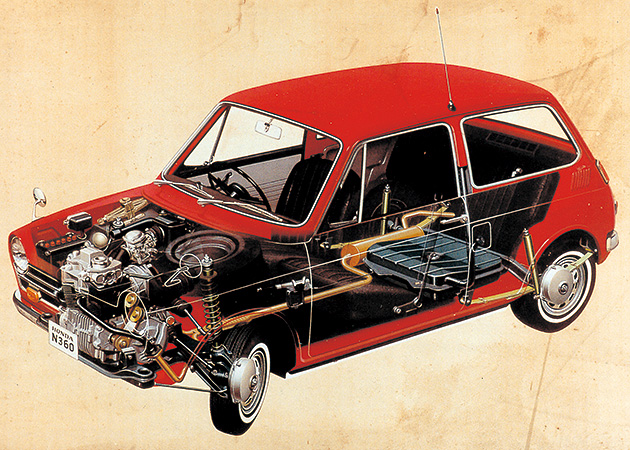
The Decision to Produce Mini Cars
The Third Research Section was formed at the R&D Center for the purpose of defining Honda’s automobile developments, and with that the project team’s inaugural prototype was one bearing the XA170 development code. This XA170 was, in fact, designed to embody the “People’s Car” concept. It employed an air-cooled, four~cylinder V-type engine with displacement of 360 cc and a front-engine/front-wheel-drive (FF) specification. Moreover, both front and rear wheels had a four-wheel independent double wishbone suspension. It adopted a semimonocoque structure in which the floorpan functioned as an integral frame member. In this way, it was believed that the rigid floor structure would allow the same chassis to be used for passenger cars and vans.
“The XA170 was definitely the car most closely related to the N360,” Nakajima recalled. “With FF drive and seating for four people, it can be said to be the basis from which the N360 was derived. The suspension changed because of changes in times, but overall the layout is definitely there.”
The Third Research Section performed test-drives day and night, devising plans based on their results. They researched documents and visited junkyards in order to study parts and body structures. At their peak, they worked in two shifts, rapidly amassing the technologies that they would need to create XA170.
Eventually the R&D Center separated from Honda Motor and reorganized as Honda R&D Co., Ltd. During that period, the Third Research Section developed into the aptly named, functionally independent Automobile Engineering Design Room. By 1963, Honda had officially joined the auto industry via the introduction of its T360 mini truck and S500 car, and by this time, the Design Room had established a system in which advanced research – becoming known as R-research – was promoted via the occasional prototype, while developing consumer vehicles for mass production. Accordingly, Honda marketed cars such as the T500, along with sports cars such as the S600, S600 coupe, and S800. In 1965, at the 12th Tokyo Motor Show, Honda exhibited the N800 prototype, a two-door hardtop compact featuring a monocoque body.
It was during this period that the Automobile Engineering Design Room began to consider the future direction of the company’s product line. Although it was already decided that Honda would aim for the full~scale production of passenger models, a war for dominance in the economy car market was being fought among the country’s major manufacturers. For a latecomer to enter the market it was thus necessary to possess competitive technologies and invest huge sums in equipment and facilities. By contrast, the mini car market represented an opportunity for Honda to compete using the technologies it already had. The investment could therefore be minimized, so the decision was made that Honda would enter the realm of the mini car.
Existing mini cars were slow and uncomfortable, meaning that to ride in them was simply to endure the displeasure of weak performance and cramped quarters. In order to ensure there would be comfortable seating for four, Hideo Sugiura, then the assistant general manager at the R&D Center, suggested, “Why not design a car from the cabin outward?”
“The body was designed by separating the car space into three sections,” Nakajima said. “The engine compartment was designed to be as small as possible, while the cabin was made comparatively large. We equipped the car with trunk space to carry luggage and other items.”
The wheels were pushed out as far as possible toward the four corners of the vehicle, and to avoid the unnecessary consumption of interior space it was decided that front-wheel drive would be used. Several plans went up on the drawing boards, and research into the body design progressed accordingly.
“We had been researching the design and production of mini passenger cars since 1963 or so,” said Sugiura. “So, following the New Year celebration in 1966, once we’d determined our policy of operations, we got together with Mr. Takao Shirai (then the senior managing director of the R&D Center) and gave the green light to the development of a mass-production system (D-development) for mini cars. After all, we had been discussing it for a long time.”
The official project for mini passenger cars was thus launched, and development moved from the R-research stage to D-development stage.
Rather than go through the procedure of developing the mini car under written “development instructions,” Nakajima, who was in charge of development, continued conferring with Soichiro Honda regarding the outline for production of a Honda mini car. Through these discussions, Nakajima was told that the car had to be one that “the customer would be pleased to own,” and that, as the manufacturer, Honda would be “proud to sell.” Indeed, that concept perfectly summarized what Nakajima had learned with regard to Mr. Honda’s philosophy. The new car, while targeted at the family market, would:
1) Be reasonably priced, first and foremost.
2) Be easy to drive and easy to get used to.
3) Have room for more speed and power, enhancing its performance.
4) Have a structure and equipment providing greater safety for use on expressways.
5) Be compact, yet comfortable to ride in, even over great distances.
Mr. Honda’s sixth requirement, which he sought from the car in the midst of its development, was modern styling. Although the N360 had within weeks of its debut garnered the affectionate nickname “Enu’koro (Little Puppy N),” Soichiro Honda wanted them to feel more than close to the car. He wanted them to be impressed by it. The following anecdote illustrates just how particular he was about the design of this new mini car:
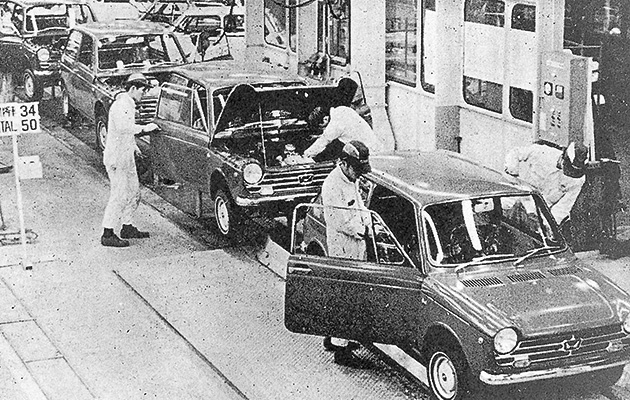
A die was about to be made, based on the completed clay model for the N360. Meanwhile, Mr. Honda visited Sayama Factory (now Saitama Factory’s Sayama Plant), where the employees were working with prototype parts, trying to devise the optimal assembly line and mass-production method. However, upon seeing the completed prototype, Mr. Honda said, “It looks funny around the rear pillar,” and headed straight to the metal-casting plant, where the clay model from which a die had already been made was sitting. Without hesitation, he took out a plane and swiftly modified the clay model. Then he headed home, satisfied that his improvement was for the betterment of the final product.
“Noooooo!” cried the employee in charge of die production, once he realized what was happening. It was too late, though. There was no choice but to alter the die in keeping with the re-sculpted clay model. It would cost 8 million yen to remake the die.
The N360 was produced according to Soichiro’s design change; yet, it remained very much in keeping with the philosophy of “utility minimum*1.” This was done in order to ensure the highest level of satisfaction for those who rode in the car, while keeping any possible dissatisfaction to the absolute minimum. That philosophy eventually carried over to the M.M. philosophy (man maximum and machine-minimum – or maximum space for occupants, minimal space for machines), which encompasses the FF system. In fact, it became the basis for Honda’s car development philosophy.
Note: *1 “Utility Minimum:” To minimize utility space, including the engine compartment, thus enhancing the efficiency of interior space
From Japan: A People’s Car for the World
Honda held a news conference and a test-driving session for its first full-scale, mass-production mini passenger car and light van – the N360 and LN360 – on October 21, 1966, at the Haneda Tokyu Hotel. Nearly 100 journalists gathered there, recording the event for posterity.
The explanation on the N360’s many features began with the statement, “This car was designed from the cabin up.” The journalists were told that the car’s interior was the most spacious and comfortable in its class, and they were told about its high-performance and ease of driving, which surpassed high-class Japanese micro-cars. Moreover, it offered active safety mechanisms.
The journalists marveled at the car during the test-drive session, saying, “It accelerates off-the line like a sports car.” At the Q&A session, their inquiries turned to price, indicating an eagerness to accept the car as a value in performance and quality.
Soichiro Honda, having already announced a scheduled February launch date and that the price would be announced on December 15, 1966, was decidedly brief in reply to such questions. “We would like the car to have a price that the customer would be pleased with.”
The 13th Tokyo Motor Show, which ran for two weeks beginning October 26, hosted a record 1.5 million visitors. Their attention was focused on two cars: the Corolla, Toyota’s model for the economy segment, and the N360, Honda’s entry in the mini car market. The N360 drew particularly large crowds throughout the show.
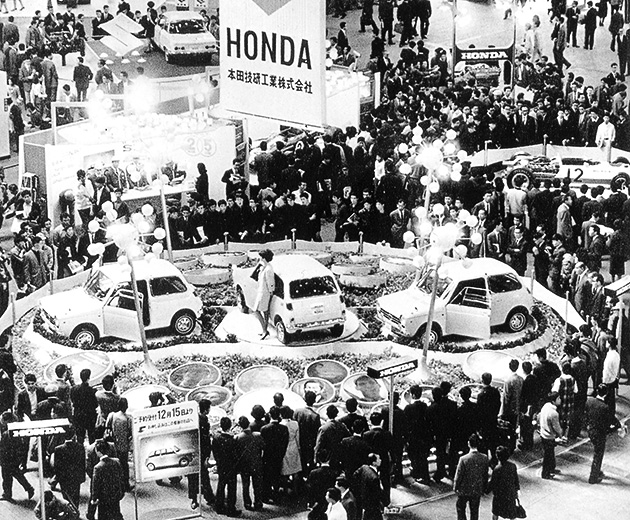
The full-page debut ad for the N360 premiered on December 15, 1966, and included the price announcement. It was published in twenty of the country’s most popular newspapers. In fact, five different versions of the ad were produced, following careful consideration of the publications, their readerships, and regions of interest. This was done in order to achieve the greatest possible effect from the debut of a single product image.
The N360’s price was 313,000 yen, an amount tens of thousands of yen less than the price of competing models. Soichiro Honda made the following statement regarding the price at a September 1967 ceremony commemorating the company’s founding (appearing in the October 1967 issue of Honda company Newsletter, No. 121):
“Our policy has always been to have a global outlook, and we always will have that policy. Today, we must build a system as soon as possible so that we can begin exporting the N series. At the time in Japan, mini cars start at 370,000 yen but we’ve priced ours at ¥313,000. Now, the N series can still sell well, even at 370,000 yen. However, our products are targeted at more than just the population of Japan. The product of skill, intelligence, and creativity should be loved by the Japanese, of coutse, but even more so by the 3 billion people of this earth. So, I would like a price that can be respected internationally, while still bringing profits to our factories and making business feasible. The pricing of the N series is intended to do that. Unless it ensures the feasibility with that price, we can’t be called a real business enterprise.”
The N360’s sale date, however. was pushed back from February to March 6, with the LN360 commercial mini van going on sale in June. In October, the TN360 – a truck – made its market debut, completing the N series.
The size of the domestic market for mini passenger cars, before the release of the N360, was less than 10,000 cars. However, with the March release of the N360 the market grew to 16,000, then 17,000 in April, and more than 18,000 in May. That month the number of N360s registered hit 5,570, becoming the leader in the industry. On June 6, three months after the car went on sale, the accumulated number of total reserved sales reached 22,500 units, reflecting the explosive popularity of this new Honda car. Moreover, both the LN360 and TN360 topped their categories within three months of their debuts. That trend continued with the number of Japanese N-series registrations reaching 500,000 in April 1969, just 26 months after the models hit the market.
Full-scale exportation of the N360 and N600 began in 1968, and by September 1970, the cumulative production volume of N-series vehicles hit 1 million. In just 13 months, these cars had re-established the mini car market.
In an address to newly recruited employees for the year 1969 (which appeared in the April 1969 issue of Honda company newsletter, No. 125), Soichiro Honda made the following statement regarding the responsibility of those working in the field of automobile manufacturing:
“As long as we are handling a mode of transportation, I want you to be responsible. If you can’t be responsible, I want you to quit right now. lf any of you cannot handle responsibility, I may name that person and have him or her quit. I say this because such modes of transportation can kill, causing horrible accidents involving human beings. After all, we’re entrusted with human lives. That’s why I strongly demand that you become responsible. If we sell defective products, the consequences can be very serious. Once you’re in this business, it becomes essential to determine precisely where the responsibilities lie.”
To fulfill the “Social Responsibilities of an Automobile Manufacturer” declared by Nishida in the November 1969 special issue of the Honda company Newsletter, debates were held regarding the issues Honda should engage. A period of debate yielded a variety of measures, from immediate to midterm and long-range ones. These included:
1) Implementing a customer campaign to promote regular inspections, beginning in 1970
2) Launching the Office of Safe Driving Promotional Operations in October 1970
3) Participating in the Experimental Safety Vehicle (ESV) project in May 1971
4) Establishing the International Traffic Safety Academy in September 1974
Honda became even more consumer-oriented in its approach to the manufacture of cars. Formerly, the company’s method of product development was to create products that the maker thought was good for consumers (the so-called “product-out” approach). However, this was taken a step further, developing products that emphasized customer goals and desires, and making every effort to meet them in every way (the “market-in” approach). The first product made under the new approach was the Honda Life, which went on sale in June 1971.
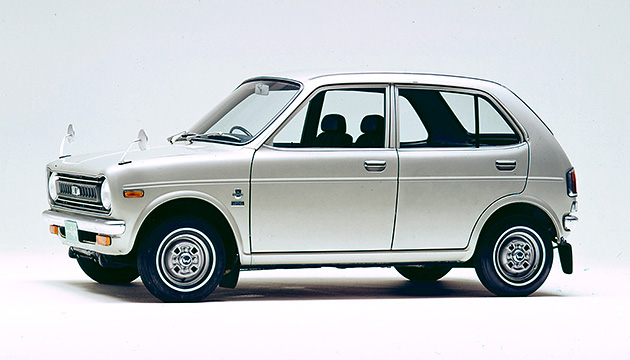
The incidents triggered by the consumer movement also effected a dramatic change in Honda’s corporate attitude. conventionally, Honda had conveyed its presence to the world through products and racing activities, but now the company began an effort to have the world understand its greater corporate activities. Examples included the publication of the quarterly magazine Shareholder Communications in order to disclose the management situation to Honda’s shareholders, and pro-active dissemination of information to media by the company’s Public Relations division.
Consumer tastes for automobiles eventually shifted to higher-class vehicles, and the mini car market fell into a state of decline. Production was suspended at Honda in October 1974 in order to secure the facilities needed to increase the production of Civics. Thus, the curtain fell – temporarily, at least – on mini passenger cars. After eight years, Honda was ceasing production of mini cars.
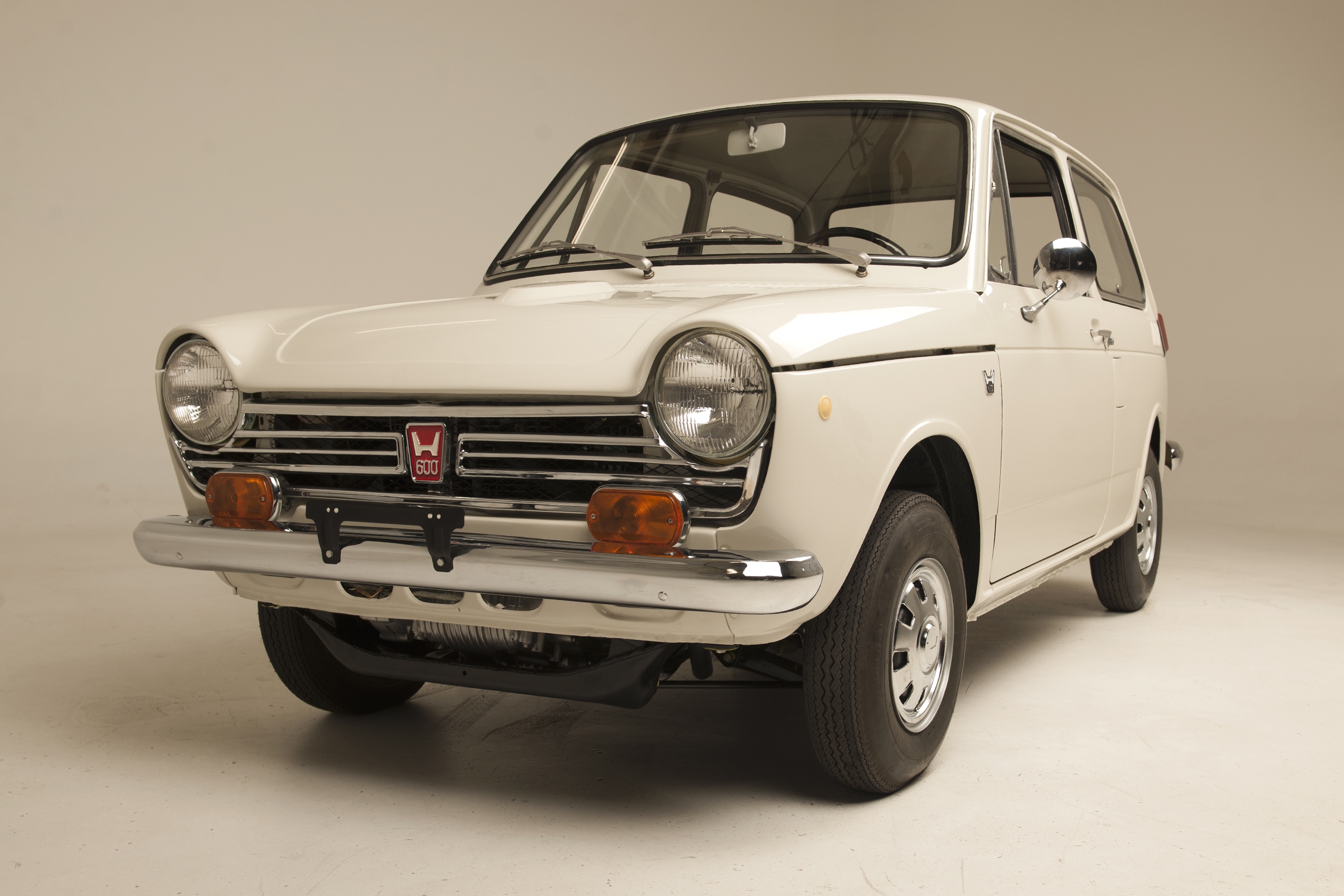
HONDA REVEALS FULLY RESTORED N600
Oct 18, 2016 – TORRANCE, Calif. — Since March, Honda has taken viewers on an in-depth journey of the restoration of the very first Honda automobile in America, the N600 with Vehicle Identification Number (VIN) 1000001, called “Serial One.” The final episode airing today, marks the end of the 12-episode documentary series that has chronicled the meticulous, step-by-step restoration of the N600 through the eyes Los Angeles-based mechanic Tim Mings.
The series finale reveals the restored “Serial One” to the world. The “Serial One” online content series, which paid homage to Honda’s automotive roots in the U.S. while showcasing the company’s challenging spirit to fulfill big dreams, has engaged fans for over six months on Honda’s social channels and at serialone.com.
In the last episode, the fully restored “Serial One” is shared with the audience, along with a look back in time, from the start to finish of the restoration process. Tim Mings and team take “Serial One” through the final finishes, from installing the doors to tightening the last bolts and signing the roof of the vehicle before the roof liner is installed. For the first time, viewers will see and hear the engine turning over after it is installed. Throughout the episode, Tim Mings shares his experiences of the elaborate rebuild and the emotional connection he developed with the N600 and Honda. The finale culminates with the journey of “Serial One” to the Japanese Classic Car Show in Long Beach, California, where it is revealed to fans.
“Throughout the incredible journey of Honda’s Serial One to a complete restoration, fans have been able to witness firsthand how meticulous the process has been to bring the first N600 in America back to its original form,” said Alicia Jones, Honda social media manager. “Sharing the restoration process with car enthusiasts and Honda fans everywhere is what this program has been all about.”
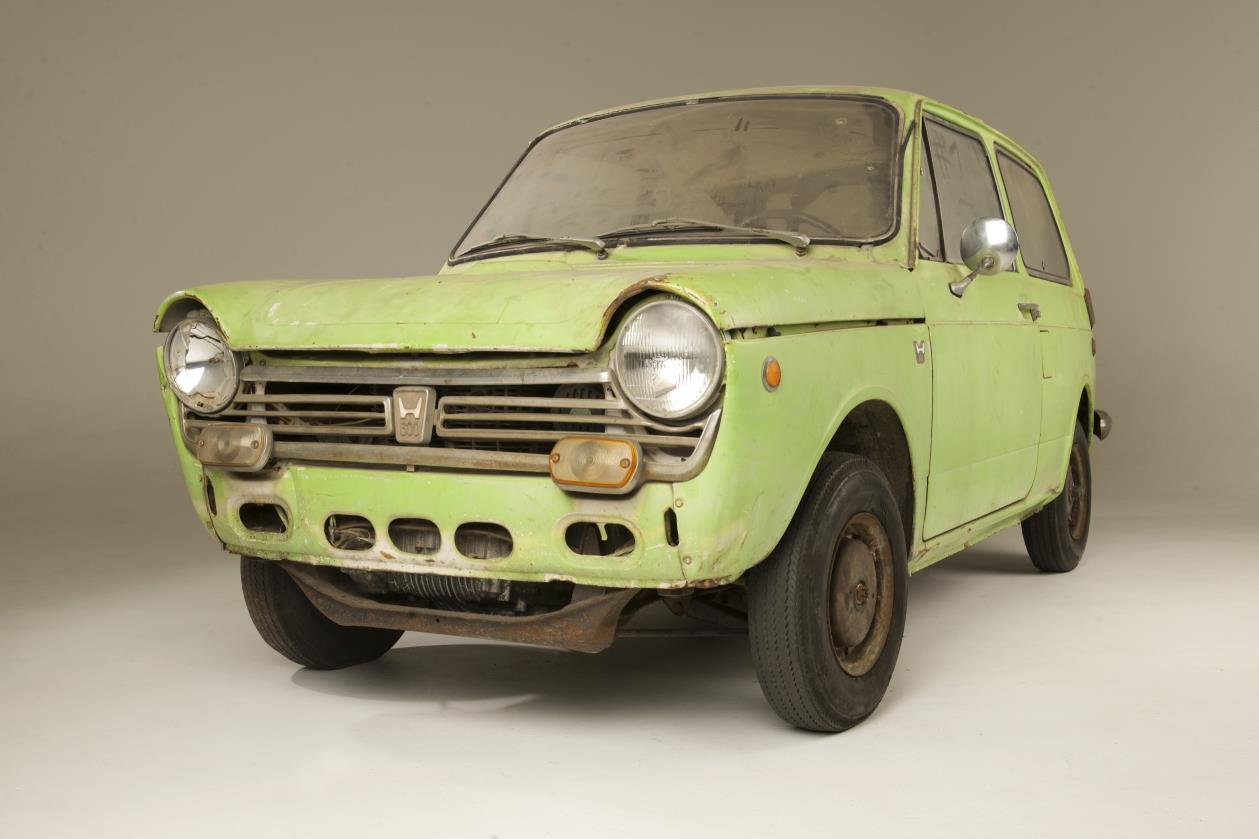
N600 History: The First Honda in America
In 1969, after a decade of growth that led to Honda becoming the top-selling motorcycle manufacturer in America and the world, Honda embarked on a new mission to sell cars in the United States. Honda entered the U.S. market with the Honda N600, which was just 122 inches in length and could actually fit between the wheels of some full size vehicles in America, which measured up to 225 inches in length and weighed nearly twice as much as the NSX.
The N600 had an all-alloy engine that could achieve 9000 rpm and reach speeds of 81 miles per hour. A simple, yet skillfully designed vehicle, the N600 was nimble and fuel-efficient, characteristics it shares with today’s Honda’s, and helped paved the way for the quality and reliability for which Honda vehicles have become known.

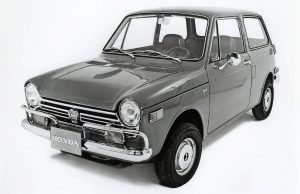
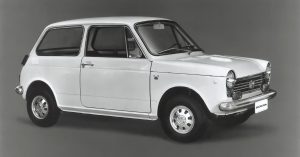
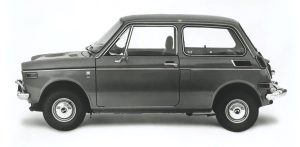

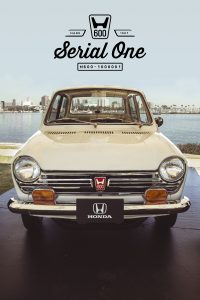
You must be logged in to post a comment.